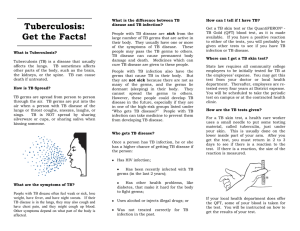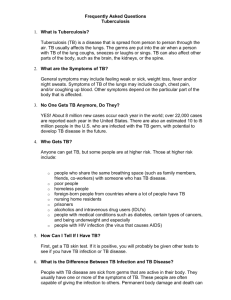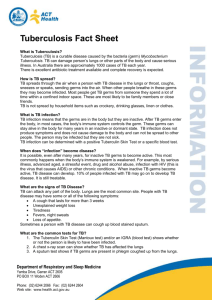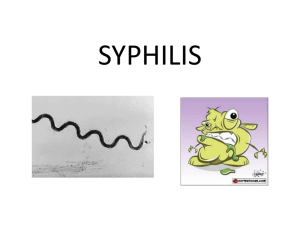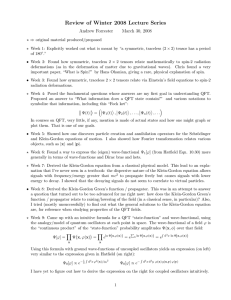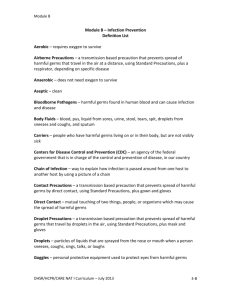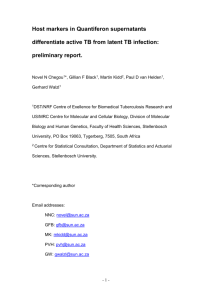Tuberculosis Information - Student Health Services
advertisement
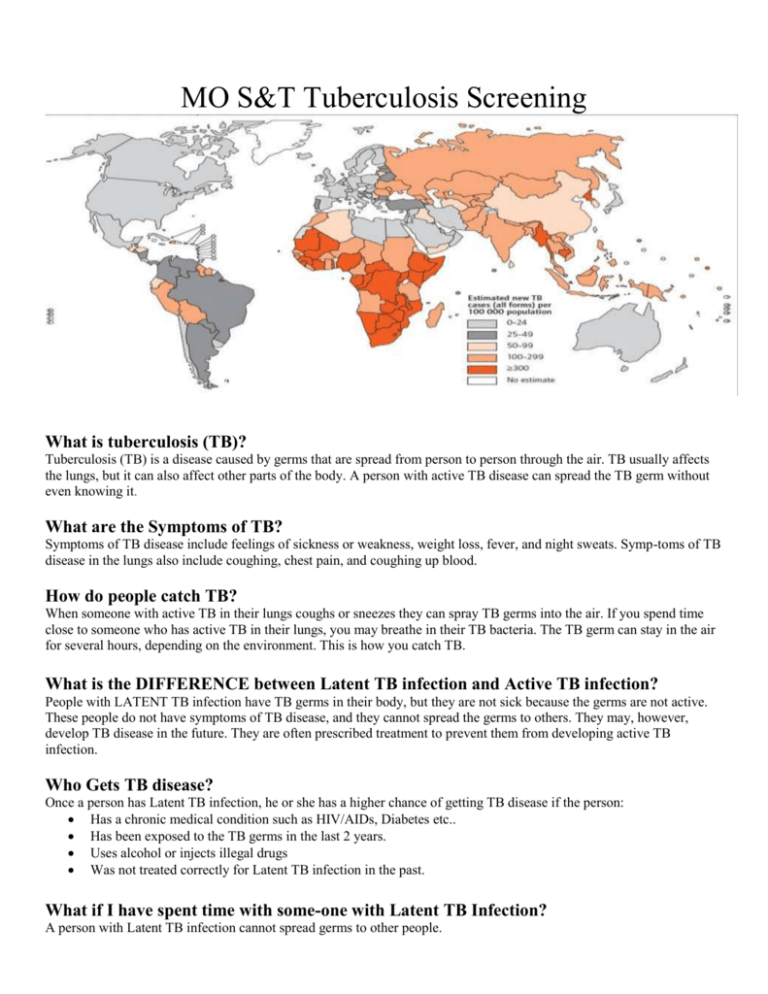
MO S&T Tuberculosis Screening What is tuberculosis (TB)? Tuberculosis (TB) is a disease caused by germs that are spread from person to person through the air. TB usually affects the lungs, but it can also affect other parts of the body. A person with active TB disease can spread the TB germ without even knowing it. What are the Symptoms of TB? Symptoms of TB disease include feelings of sickness or weakness, weight loss, fever, and night sweats. Symp-toms of TB disease in the lungs also include coughing, chest pain, and coughing up blood. How do people catch TB? When someone with active TB in their lungs coughs or sneezes they can spray TB germs into the air. If you spend time close to someone who has active TB in their lungs, you may breathe in their TB bacteria. The TB germ can stay in the air for several hours, depending on the environment. This is how you catch TB. What is the DIFFERENCE between Latent TB infection and Active TB infection? People with LATENT TB infection have TB germs in their body, but they are not sick because the germs are not active. These people do not have symptoms of TB disease, and they cannot spread the germs to others. They may, however, develop TB disease in the future. They are often prescribed treatment to prevent them from developing active TB infection. Who Gets TB disease? Once a person has Latent TB infection, he or she has a higher chance of getting TB disease if the person: Has a chronic medical condition such as HIV/AIDs, Diabetes etc.. Has been exposed to the TB germs in the last 2 years. Uses alcohol or injects illegal drugs Was not treated correctly for Latent TB infection in the past. What if I have spent time with some-one with Latent TB Infection? A person with Latent TB infection cannot spread germs to other people. What should I do if I have been ex-posed to someone with Active TB? People with Active TB are most likely to spread the germs to people they spend time with every day, such as family member or co-workers. If you have been around someone with Active TB you must be tested. How do you get tested for TB? There are two test used to detect TB infection. The Mantoux (PPD) tuberculin skin test is performed by injecting a small amount of fluid into the skin in the lower arm. A per-son given this skin test must return within 48-72 hours to have a trained health care worker look for a reaction on the arm. A second test is the QuantiFER-ON-TB Gold test. This test is a blood test that measures how the patient’s immune system reacts to the germs that cause TB. **The University of Missouri Science and Technology re-quires the QuantiFERON-TB Gold test.** What is the QuantiFERON-TB Gold test (QFT)? QuantiFERON-TB Gold test is a blood test that can help diagnose TB infection. QFT has a major scientific advance over the 110 year old tuberculin skin test (or Mantoux), giving greater accuracy and a more reliable result. What does the QFT test involve? Is there any risk associated with have the QFT test? A small sample of blood is collected and sent to the laboratory for analysis. There is no risk associated with having the test, apart from possible slight discomfort of having a blood sample collected. How long before I get my results? A QFT result is usually available in 48-72 hours of blood collection. You will be notified by your S&T e-mail of your results once they are received. What does a Positive QFT blood test mean? A positive QFT test only tells that you have been ex-posed to the TB germ. It does not tell if you have Active or Latent TB infection. A chest x-ray will be ordered to see if the disease is active in your lungs. I have had the BCG vaccine; do I still need the QFT blood test? Yes, BCG is used in many countries but is generally not recommended in the United States because it does not completely prevent people from getting TB? It may also cause false positive TB skin test. However, having the BCG vaccine will not affect the results of the QFT blood test? Key Facts about Tuberculosis (TB) is second only to HIV/AIDS as the greatest killer worldwide. In 2011, 8.7 million people fell ill with TB and 1/4 million died from TB. Over 95% of TB deaths occur in low and middle income countries, and it is among the top three causes of death for women aged 15 to 44. In 2010, there were about 10 million orphan children as a result of TB deaths among parents. TB is a leading killer of people living with HIV causing 1/4 of all deaths. Multi-drug resistant TB is present in virtually all countries surveyed. The estimated number of people falling ill with tuberculosis each year is declining. The TB death rate dropped 41% between 1990-2011.
